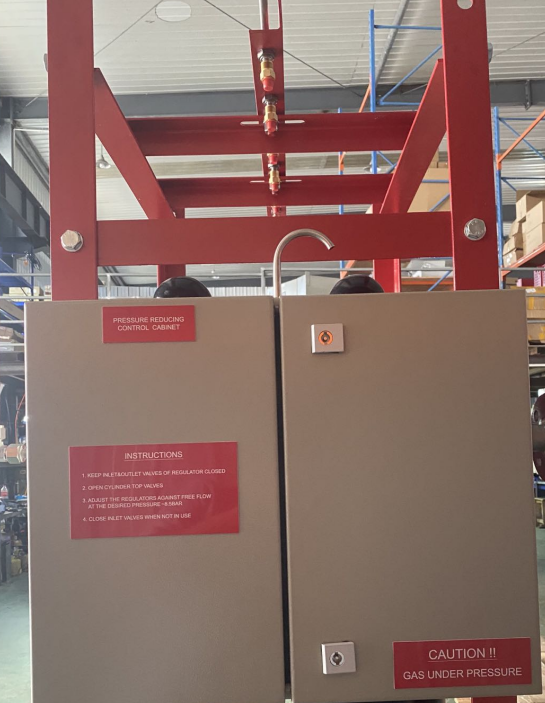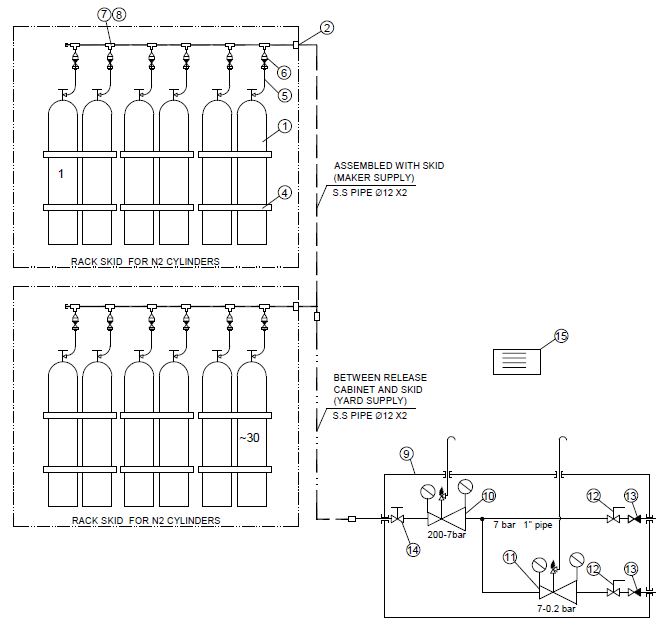

Properties
Nitrogen (N2) is a colourless gas, without smell or taste, slightly lighter than air (0.97). The
earth’ s atmosphere at sea level consists of 78.03 vol.% nitrogen, 75.5% in weight. Nitrogen
is not poisonous, but suffocating without any warning when used to reduce the oxygen
content in the air. It is slightly soluble in water and other liquids, and has poor properties for
conduction of heat and electricity.
Nitrogen does not ignite, and does not support either combustion or breathing.
Nitrogen acts like a “ inert” gas towards most materials. Oxidation symptoms on solid
materials and liquids can be delayed or completely stopped in an atmosphere of 100 vol.%
nitrogen.
Nitrogen will bind to some of the more active metals, such as lithium and magnesium nitrites.
At high temperatures it will also bind to hydrogen and oxygen as well as other base elements.
Pure nitrogen is produced industrially in different ways. Either by rectification (distillation) of
liquid air, as a waste product when producing oxygen, or by straining of air in a nitrogen
generator.
At cryogenic temperatures (-196℃) nitrogen acts as a liquid, not magnetic or toxic, and does
not create any irritating vapour.
Normally nitrogen is stored and transported as a gas at 200 bar in cylinders or, for bigger
quantities, as a cryogenic liquid at a pressure lower than 14 bar.
Application
Nitrogen is used to prevent danger for oxidation, combustion, explosion or fire. Most nitrogen
is used in:
As gas:
- making ammonia
- pressure testing of system
- inerting of pipes and tanks
- washing of melted metals (disoxidating)
- covering combustible and explosive materials as liquid:
- removing artificial materials
- freezing in and preserving of medical and biological preparation
- freezing of earth
- cold grinding
- cooling of metals, shrinking.

